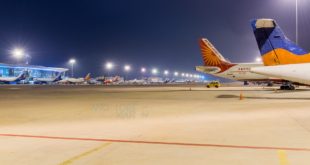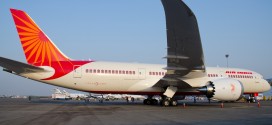Updates – Join us to educate travelling public
Since we wrote the original story almost six years ago, many more incidents have occurred and injuries caused. Just two stories we have documented for your reading. First 23 people hurt on an Emirates airline flight to Kochi due to turbulence. Just yesterday, 22 people hurt aboard a Singapore Airlines A380 en-route to Mumbai. Injuries due to turbulence are an almost daily occurrence in the skies across the world. Its a natural phenomena and all we can do it keep ourselves strapped in. Join our efforts to educate the travelling public.
Original story January 24, 2009
“Ladies and gentlemen, from the flight deck, ……. we advise you to always keep your seat belt fastened when seated, even when the ‘fasten seat beat’ sign is switched off”
How many times have we heard this advice during our flights ?
How frequently do we follow this advice ? The road warriors, and frequent fliers will probably say they do, but most of us do not.
Just as most of the 285 passengers of a Northwest Airlines Airbus A330-300, flight NW022 from Tokyo Narita, Japan to Honolulu, Hawaii, USA on January 22, 2009. The aircraft experienced severe turbulence for about 20 seconds while en-route near the Midway Islands.
One flight attendant received serious injuries, three passengers minor injuries. The flight attendant suffered serious head and neck injuries and was delivered to a hospital in Honolulu after the flight crew elected to continue and land safely. Two passengers with injuries, one to the hip, the other with neck and arm injuries, were also delivered to a Honolulu hospital, a third passenger was treated at the airport.
In the din of geese and a water landing, most of us missed this incident, one that occurs with far more frequency than bird strikes, and unlike bird strikes, this is something, we passengers can protect ourselves against.
One of the worst incidences of Clear Air Turbulence occurred on December 28, 1997. A Boeing 747-100 performing United Airlines flight UA826, and flying the same route as NW022, from Tokyo, Narita to Honolulu. Two hours into the flight, at 31,000 feet, the plane received reports of severe clear-air turbulence in the area and the seat belt sign was turned on, but before passengers could fully react, the aircraft suddenly dropped around 100 feet, seriously injuring many passengers and causing damage to the aircraft. The plane turned around and landed safely back in Tokyo, but was not put back in service. One passenger died of her injuries after landing in Tokyo. (Read NTSB press release of the incident).
Do you fasten your seat belt for the duration of the flight ? Share your thoughts via a comment.
 Bangalore Aviation News, Reviews, Analysis and opinions of Indian Aviation
Bangalore Aviation News, Reviews, Analysis and opinions of Indian Aviation



As a frequent flyer, I always keep my seat belt on even in the best weather- short and long haul flights. However frequently one flies, turbulence can be a surprise and catch you unaware!
I do the same always as being worked with Airlines I am aware of the consequences this can lead to. So how are you planning to educate the flyers about it ? want to join this initiative ?